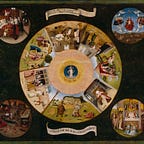Jack Kerouac Photographed by Elliott Erwitt
Elliott Erwitt has an uncanny knack of photographing high-profile figures while remaining totally unnoticed. He recalls a moment in his career while shooting for Vogue at Truman Capote’s legendary Black and White Ball in New York. The event was highly controlled, with the sole intention of allowing the plethora of celebrities to relax, dance, and mingle, removed from the overbearing eye of the public. Amazingly, Erwitt was able to inconspicuously wield his camera and capture shots of Frank Sinatra, Mia Farrow, and Candice Bergen enjoying the night.
Erwitt skillfully breaks down the sheen of privacy which celebrities hide behind, presenting his figures as unguarded and pure. For example, widely known as an anxious and neurotic actress, Marylin Monroe surprisingly allowed Erwitt to shoot her in a bathrobe in her dressing room between scenes for Some Like it Hot. Further, Erwitt captured the iconic image of Jackie Kennedy weeping at her husband’s funeral, an intimate moment encapsulating the grief resounding from a tragic loss. The photographer’s skill can be accredited to his peaceful, unobtrusive manner. He often approaches projects with a playful sense of adventure and spontaneity, explaining that a great photograph is ‘nothing you can plan on. It just happens’. Erwitt is said to open himself up to his subjects, welcoming vulnerability in order to form close and meaningful relationships.
In his portrait of Jack Kerouac, taken in New York in 1953, Erwitt hints at a shared understanding with the American novelist. Leader of the Beat movement, Kerouac rebelled against traditional literary standards, writing in spontaneous (and often grammatically incorrect) prose with radically nonconformist characters. Shot in monochrome, Erwitt’s portrait embraces Kerouac’s turbulent and impatient personality. The sheaf of paper the novelist clutches is blurred in movement, and his heavy brow shadows his eyes. It is unclear where Kerouac is headed, but he moves fast and with a purpose, shrouded in mystery. Kerouac’s figure is surrounded by blocks of luminescent white light. Above him, the ceiling melds into a series of brilliant scintillating squares. To his side, a group of metal railings shimmer, strokes of black hitting panels of gleaming white in a criss cross of geometry. Opposing Erwitt’s usual technique of blending into the background, Kerouac appears to maintain eye-contact with the camera lens, acknowledging that his portrait is being taken. Not one to shy away from confrontation, the writer focuses on Erwitt, who captures this intense exchange of gazes.
Kerouac often yearned for ‘the hearthside ideal’, questing for the warmth and solidity of a stable home and loving family. Searching for this elusive concept, the writer became disillusioned, viewing America as if he were a foreigner inhabiting an unforgiving country. Similarly, Erwitt himself grew up with a number of conflicting identities. Born to Jewish-Russian immigrant parents, he moved from Paris, to Italy, and finally to the United States. A child of diaspora, Erwitt’s own family history resonated with Kerouac’s longing for meaning. Thus, the photographer shoots the writer from below, the two men sharing a moment of profound understanding.
Originally published: Huxley-Parlour Gallery | Exhibitions, Artists and Artwork in London (huxleyparlour.com)
